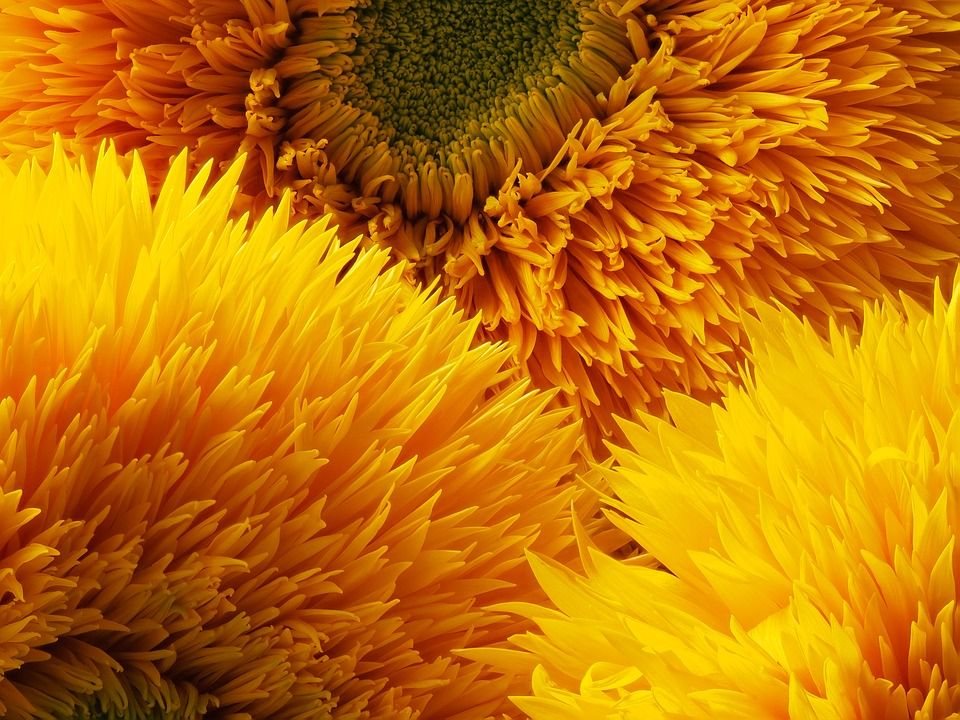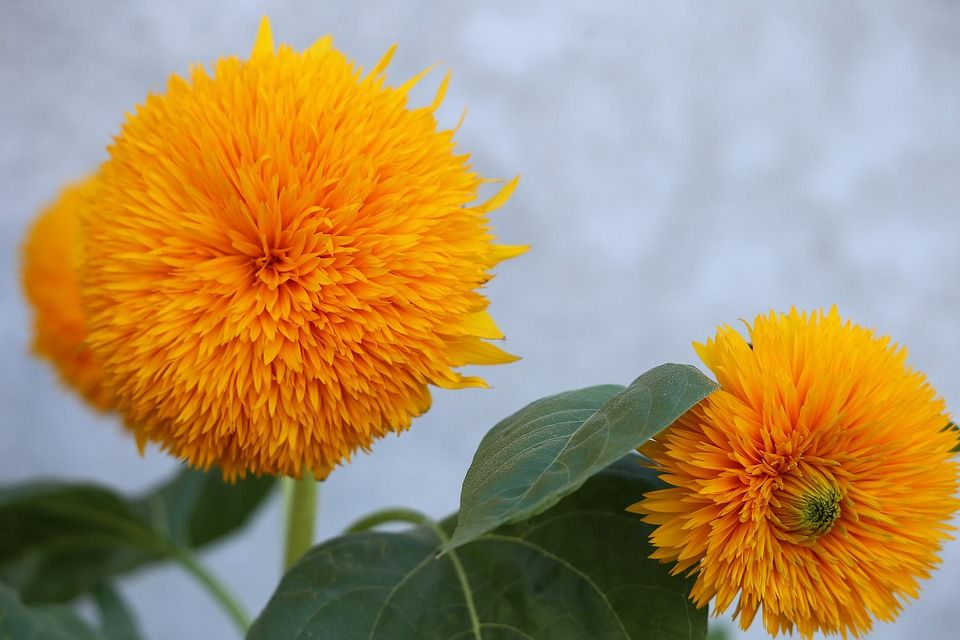Teddy Bear Sunflower: How to Grow and Care for Teddy Sunflower
Nothing says “hello” and welcomes your guests to your garden like the charming Teddy Bear sunflower. Named for its puny and compact size, like the cuddly teddy bear, this flower fits in just about any corner in your garden. Unlike its giant cousins, the Teddy Bear sunflower with its fluffy blooms grows well in pots and doesn’t need a ton of care.
As usual, there’s always a caveat or a few. And the Teddy Bear sunflower is no exception. Here, we’ll tell you all about these delightful plants, how to grow them, and what you need to watch out for when caring about them.
Teddy Bear Sunflowers at a Glance
The Teddy Bear sunflower is a dwarf plant that belongs to the Helianthus annuus family. As an annual flowering plant, it doesn’t grow more than 3 feet at most even if you plant it directly in the garden with plenty of space and nutrients.
Each plant grows a few flowers during the bloom season. The flowers themselves look like a pom pom and have a golden aura about them. Unlike the giant sunflowers, these ones are no more than a few inches in diameter and lack the abundance of seeds you find in the large sunflower plants.
The leaves of this artsy plant have ornamental values. They’re large and shaped like a heart. The topside of the leaf is smooth to the touch and the juxtaposition between the dark green leaves and golden blooms creates a cheery atmosphere in your garden or patio.
The summer months are when the flowers grow and blossom. The first flower usually makes its presence known only eight weeks after sowing the seeds. As long as you give the Teddy Bear sunflower water and nutrients, it will keep making flowers until the end of summer.
Another advantage of having Teddy Bear sunflowers in your garden is the type of pollinators they attract. You’ll have plenty of butterflies and bees making their rounds and filling the air with their colorful dances. The sunflowers grow well with other companion plants and herbs.
How to Grow Teddy Bear Sunflowers
As a half-hardy annual, the Teddy Bear sunflower is not immune to the ravages of the cold weather or frost. This is why you should always sow the seeds indoors and wait for the frost to be over before bringing the seedlings outside. For that reason, growing Teddy Bear sunflowers falls under two categories: indoors and outdoors.
Let’s see how that is usually done.
Indoors
The best time to start sowing your Teddy Bear sunflowers is in the middle of the spring. Yes, frost is still a threat, but since the plants will grow inside until they harden-up, then you have nothing to worry about. Here are the steps you need to follow:
- Use small pots and fill them with soil or compost.
- Sow two seeds in each pot. Make sure the seeds are about a half-inch deep in the soil.
- Water the pots well without soaking the soil.
- Place the pots on a windowsill or any other spot that gets plenty of sunlight.
- Watch the seedlings grow and when they show the second set of leaves, it’s time to separate them.
- Remove the soil out of the pot and gently separate the plants at the root.
- Replant each seedling in its own pot, add compost, and water well.
- Keep the pots in the same sunny place and make sure the soil doesn’t go dry.
- Once the frost threat is over, you can plant the sunflowers outside in a well-drained spot in your garden.
- Keep a distance of at least 20 inches between each sunflower plant for better aeration.
- Add liquid fertilizer or a slow-release plant supplement and water the soil well.
- Deadhead the dropping flowers to encourage the plant to grow more blooms.
Outdoors
If you want to plant your Teddy Bear sunflowers directly in the garden you’ll have to go about it a little differently than if you sow the seeds indoors first. Here’s how.
- Prepare the bedding about a month before you plant the sunflowers. Choose a sunny place that gets plenty of light and air.
- Add mulch, compost, and any organic material you have prepared in advance and let it settle well in the soil.
- The sunflowers can grow in any kind of soil even a poor one. However, you might want to use a liquid fertilizer once a week to boost its growth and flowering.
- At the end of the spring when the fear of frost is over, plant two to three seeds in each spot. Make sure the seeds are a half-inch deep in the soil the same way as you would do if you were sowing them in a pot.
- Water the seeds and cover them with a mesh to keep the soil warm and protect against critters digging them up.
- Once the seedlings have a second set of leaves, it’s time to thin out the plants. Take out the weak ones and keep the strong seedling in place.
- Space the plants leaving about 20 inches between each sunflower for better ventilation and light.
- Protect the plants from critters and predators using mesh.
- Water the plants and add slow-release fertilizer on an as-needed basis.
Teddy Bear Sunflower Care
As with other annual flowering plants, the Teddy Bear sunflower needs some attention and care from you. Admittedly, this is a hardy plant that does well on its own without much human intervention. Still, you want your blooms to look their best and your plant to be healthy and pest-free. As far as caring for the Teddy Bear sunflower is concerned, you need to pay attention to the following.
Water
These lush sunflowers love water in moderation. While a dry soil wouldn’t hurt the plant much especially if you notice it soon enough and water the bedding, a waterlogged pot or planter will do more harm to the Teddy Bear sunflower. So make sure the soil is wet but not overwatered. Use a gentle spray and avoid turning the topsoil with a powerful hose.
Soil
As we mentioned, the annual Teddy Bear sunflowers are not fussy growers. They tolerate even poor soil as long as it’s well-drained. Mulch and compost are great supplements to add to the soil to improve aeration, water retention, and prevent pests and diseases. Make sure the soil is weed-free. Weeds compete with the sunflower plants over water and nutrition.
Pests
For a beautiful plant with fluffy blooms that attract butterflies and bumblebees, the Teddy Bear sunflower also acts as a magnet for some pests and bad critters. Most notable are slugs, cutworms, caterpillars, and snails. Squirrels feed on the seeds so make sure to protect them until they germinate. Pick any insects or bugs you see and get rid of them. Also, remove any diseased leaves especially if they’re covered with mildew.
Harvesting Teddy Bear Sunflower Seeds
While the Teddy Bear sunflowers don’t produce an abundance of seeds compared to other species of the sunflower family, seeds are still an important part of the lifecycle of the plant. The seeds appear once the blooms start to fade.
Squirrels have an affinity for sunflower seeds. Whether they’re seeds you sowed in the soil or seeds growing out of the withering flowers. So it’s important to gather the seeds as soon as they’re ripe. The seeds themselves are smallish and are either dark gray or black.
Once the seeds start dropping, that’s your cue to collect them before squirrels steal them.
Tips for Growing and Care for Teddy Bear Sunflower
Whether you’re a seasoned gardener or you’re taking your first steps, Teddy Bear sunflowers are a great way to start your hobby. To ensure you get a healthy plant with bright and cheery blooms, follow these tips.
- Don’t water the base of the plant directly. Sprinkle the water 2 to 3 inches from the roots.
- Look out for weeds and take them out regularly.
- Mulch is a great supplement to maintain the temperature of the soil.
- Add fertilizer sparingly and only if the soil is too poor. Too much fertilizer leads to overgrown heads which prove to be too heavy for the stalk and cause it to break.
- If the plant grows too fast, you might need to give it support in the early stages of development. This often happens in rich and fertile soil.
- Mildew is a common disease that affects the leaves and stalks. Remove the infected leaves as soon as you see them.

